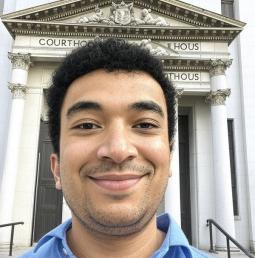Are Hospital Orders: The Ultimate 'Get Out of Jail Free Card' for Dangerous Offenders?
The recent case of the Nottingham killer
Calocane was convicted of killing caretaker and students and in a random attack while experiencing acute psychotic symptoms of .
His sentencing, to a , was heavily criticised by many, including the victim’s families.
And now the use of a similar order for , who set two elderly mosque-goers alight while suffering from psychotic delusions, has once again brought this issue back to the fore.
The big suspicion is, do allowances for within the legal system mean that some of those who commit terrible crimes go unpunished, thus sidestepping one of the functions of the ? Is it a ‘’ for offenders?
Because, if so, how does the case of fit into the equation – a man who received a life sentence with a minimum term of 46 years for a triple murder, when there was no doubt as to the severity of his and the fact that he was not in a clear state of mind at the time of the killings? We look at exactly what is going on, examine the rationale behind the use of , and help you decide, ?
A or , which both entail an offender being placed in a secure mental facility for monitoring and treatment, can be chosen as an alternative to other sentencing options based on a number of considerations.
Not least, there are . We have to do what’s right all round regarding the placement of severely mentally unwell individuals who, without correct treatment, could be a danger to themselves and those around them, whether or other inmates. Keeping them on the straight and narrow, and spotting any early warning signs, isn’t just about what’s good for the patient: it affects others.
That’s where a provides a better environment for monitoring such patients safely and ensuring compliance with a necessary treatment regime. It’s one reason for sending an individual to a secure mental health hospital.
For comparison, these units may be considered to be equivalent to a , rather than to a maximum security prison which others who committed the same offences may end up.
However, beyond this practical point is the larger issue of , , and .
The law is designed with a balanced approach, but one that is required to take into account the reality of , as described by medical guidelines.
Certain conditions mean, by their nature, that an ill person is not considered fully aware of their actions or able to make free informed choices.
Referring to an expert of each particular individual, the court must determine to what extent they can be punished for a crime they committed while not mentally lucid.
Without a doubt, is a function of our . If a murderer is convicted to a life sentence with a minimum term of 20 years, they have forfeited 20 years of their freedom, regardless of any other factors.
If, a few years into their sentence, they were considered to have reformed and to no longer present a risk to society, they would nevertheless be required to serve the rest of their minimum term – as a for their crime.
This is not fully the same with , where the focus is on and .
Someone could, potentially, find themselves back in the community after a few years – although in reality the system has balances and it is far from being inevitable that this would happen.
In the first instance, in the case of a , a gets to have their say. It isn’t just doctors who decide when a person gets out.
An inmate won’t automatically get out on the grounds that they have become mentally stable. It is a balancing act, where it isn’t all about what is good for the hospital inmate. It is also about what seems right from a .
A judge does not, for example, have to let someone out who they believe isn’t showing enough for what they did.
And if a criminal is released back into society, they are unlikely to be free to do whatever they want. They will frequently be required to take , whether they want to or not.
And there may be other restrictions, which is where we see the other side of the system, where we see , a man with severe who received a 43-year prison sentence for crimes he committed when suffering from acute – a case which proves that there are limits to what can excuse.
A review pointed to a string of failings in the case of . In the community, he was supposed to be closely monitored by experienced professionals from various services, able to deal with the complexities of his case, but instead, he slipped through the system and went on a path of deteriorating .
Crucially, he was absolutely forbidden from smoking , having been warned that strong marijuana could bring him into a where he could pose a harm to others. However, he chose to disregard this warning.
As his deteriorated, the response from services was not adequate, and tragically, in a psychotic episode, he went on to commit murder.
So why, following this, did he not have a , and why was he instead sent to jail to serve a life sentence?
The answer is, he was given one chance by the system, and he used it up.
The court ruled that it was his responsibility to adhere to the rules imposed upon him, which he decided to break by smoking marijuana.
From then on, he could not claim that what had happened had been due to no fault of his own.
And this highlights how, far from being free, even those on , who may be released back into the community earlier than those who committed similar offences but who did not have a situation taken into consideration during their sentencing, are on a tight leash. Their freedom only exists as long as they follow all the rules imposed on them, and are cooperative with the professionals who may order them to take the which keeps them lucid and functional.
And again, in all serious cases, a judge must be satisfied that there is genuine and a suitability to integrate back into society.
Crucially, the orders handed down to and were indefinite, meaning that it is perfectly possible for them to be in a secure hospital for several decades.
emerge from this examination as a considered option, taking into account the medical realities of various and how they impact upon . They also give our legal system a way of mitigating risks and complications which can arise from mentally ill patients in a general prison setting.
The system does in effect provide a ‘’ to individuals who may have committed horrific acts, when the medical evidence provides grounds to hold them not fully responsible.
There is no denying that three years in a secure would be considered by most people to be much less of a than a decade in a .
However, balanced against this, people on are required to adhere to strict conditions, maybe for the rest of their lives, and the handed out to , who failed to comply with his conditions, shows that an individual who willingly puts others at risk doesn’t get a free ride due to their .
Well, that’s all for now. But until our next article, please stay tuned, stay informed, but most of all stay safe, and I’ll see you then.






